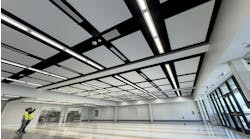Latest from Technology
Sponsored
By Anand Subbaraj, CEO of Zuper
I recently read an article from CONTRACTOR Magazine’s management columnist Al Shwartz about digitization in the trades.
In it, the author explains how thumbing through trade magazines today is “an adventure in emerging digital technology as it applies to our industry.”
He goes on to argue that, at its best, digital technology can unlock greater productivity, saving contracting businesses time and money.
At its worst, however, it can act as a big brother, watching everything you do without adding true value to your organization.
The question then becomes, how can any service business wade through the myriad solutions and arrive at the digital technology that will truly add value to its organization?
This is a good question, but as the former Head of Product at Microsoft, what I think the author missed is a major software trend that is turning these digital solutions on their head. This trend is putting more power in the hands of individual contracting businesses to customize their workflows and automate processes themselves with just a few clicks of a button.
I’m talking about low-code.
Low-Code 101
For many contracting and field service businesses that are evaluating new technology, onboarding can be a long and difficult process as you learn a new software that’s basically a new language. You often have to work with the customer experience team for hours before the product is fully integrated into your workflow and all your employees are effectively using it.
More importantly, every business has unique needs, and any time you need to build out a custom workflow, you have to navigate this process with their internal development team.
It’s not flexible.
Low-code is.
So what is it? Low-code is a simple user interface that allows non-technical users to build or customize their own applications to suit their unique needs. Think of building applications like making a statue. You can either cut it out of stone by hand like Michelangelo, or you can get a 3D printer and some open-source plans online. Low-code is the 3D printer that allows you to build what you need when you need it.
Low-code is full of drag and drop interfaces where you can configure an application visually without almost no coding skills whatsoever. Just move a few boxes around, and you’ve got a completely new workflow to suit your needs.
Low-code is a growing market. In fact, Forrester says spending in the low-code marketing will top $22 billion by 2022. Gartner goes even further. They predict that 65 percent of all applications will be built using low-code by 2024.
If this is the future of software, then how can we turn contracting and field service business owners from software consumers to software designers, and how will this change the ways in which they evaluate digital technology moving forward?
How Contracting Businesses Can Adapt
So how can we apply low-code to contracting and field service businesses?
Here’s a simple example. Consider your work order management. If you get an inquiry, you want to create workflows that are consistent across the board in terms of following up with customers, smart scheduling, intelligent dispatching, and live notifications or status updates from your employees that are visible both to you and your customer.
Everyone is going to have a different system, and no one knows your workflow better than you. So who better to quickly customize your software to your own needs than yourself? As your business changes, you can be flexible to update your workflows and software to adapt to those changes in real time.
This is especially important in times of rapid change. For instance, during COVID-19, technician checklists were completely turned on their head. All of the sudden, they became more than just tools to ensure that technicians didn’t overlook customer requests; instead, they were critical avenues with which to quickly update hygiene best practices and customer interaction guidelines given the rapidly changing environment. Low-code allows you to redefine checklists with a drag and drop menu to codify customer engagement protocol and send that out to all your employees so that they’re getting new checklist alerts that same day.
What needs to happen is a shift in mentality. Not everyone is tech-literate, but tech is becoming more and more user-friendly. Regardless of how tech-savvy you are, you know your business and, today, if you can imagine it, you can build it.
We’re All Low-Coders
So if you’re looking for digital technology, don’t go after inflexible solutions. They’ll tie you down in times of change, and you’ll have less control over your workflows at the end of the day.
Maybe this sounds like more work, but trust me, endless back-and-forth with software companies trying to get them to build out the perfect solution for you will be more time consuming and expensive in the end.
Anand Subbaraj is the CEO of Zuper, provider of a leading intelligent workforce management platform for service businesses such as residential & commercial cleaning, HVAC, electrical, Internet Service Providers, plumbing, and landscaping. Anand is a seasoned product leader with over 17 years of experience in technology and 13 years at Microsoft, specializing in the areas of Big Data, BI & Analytics, Cloud Computing, Digital Transformation, and SaaS.


